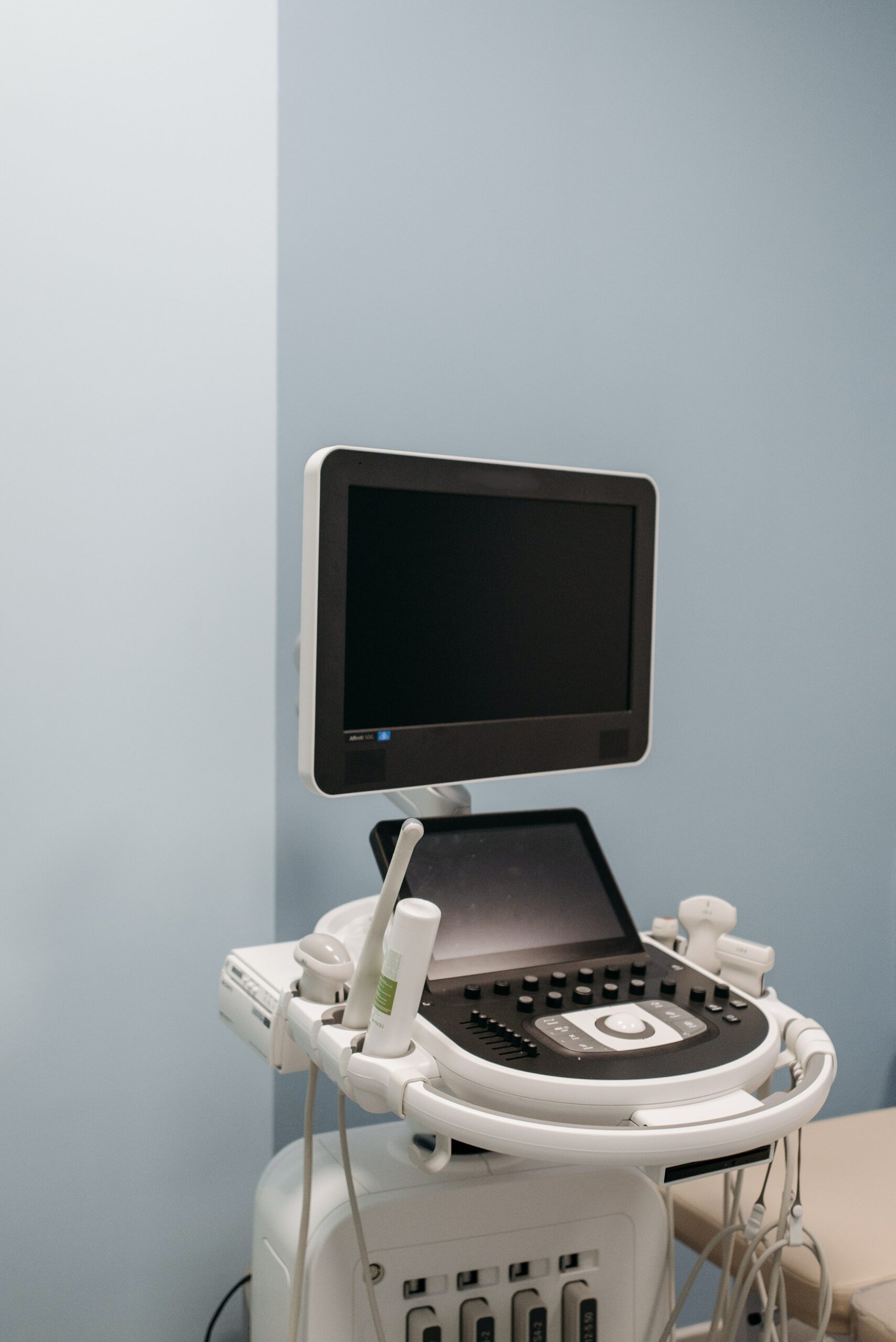What Should You Do about Prenatal Ultrasounds?
Beverly Beech, a birth activist, summed it up neatly when she said “The routine use of ultrasound in pregnancy is the biggest uncontrolled experiment in history”.
Chances are you’ve had an ultrasound in your life. If you’ve been pregnant, you will have had at least one, possibly several ultrasounds during each pregnancy. But having an ultrasound isn’t necessarily a good thing. In fact, their safety can’t be guaranteed, and their usefulness is questionable at best.
When Ultrasound Is Used in Pregnancy
OB/GYNs commonly use vaginal ultrasounds at your first appointment. They confirm the pregnancy and check to see if the embryo is indeed implanted in the uterus. Another ultrasound is performed at around 20 weeks of gestation. This time, the doctor is trying to confirm the gestational age of the fetus and chart his or her growth.
Many parents use this ultrasound to find out the sex of the baby. Finally, an ultrasound is going to be performed if the woman exceeds her due date. Your medical care provider will check your amniotic fluid levels in order to ensure that the baby is doing okay.
If your doctor suspects complications, he will order additional ultrasounds. During my first pregnancy, the doctor order numerous ultrasounds, because my baby failed to grow. Unsurprisingly, the ultrasounds couldn’t correct the problem.
No Organization Recommends Ultrasounds
What may surprise you is that routine no major organization recommends the routine use of ultrasounds. Ultrasound scanning is mainly a big business concern where marketing is important. With the event of ultrasounds, many doctors have lost their ability to do things that most midwives can do in their sleep.
Today, most doctors rely exclusively on ultrasounds to check for both the growth and positioning of the baby. Many midwives who encourage natural childbirth use much simpler methods with the same precision. Instead of using ultrasound, midwives measure the height of the uterus. A practiced midwife can also feel for your baby and can tell you where the head is located without an ultrasound.

The Problem with Using Ultrasounds
Most studies have shown that ultrasound does not detect the abnormalities it is supposedly checking for consistently. And often a problem is diagnosed in error. But even if a certain disease is diagnosed correctly in utero (of which we can never be 100% sure of), there is usually nothing that can be done for it.
Diagnosing placenta previa is of no use until the woman is in labor and the outcome (a C-Section) is the same, with or without the ultrasound. Using ultrasound to diagnose babies that grow poorly actually increases the rate of C-Sections. Babies with serious birth defects might have to undergo a C-Section more often than not, which doesn’t help them. These same babies also usually are born sooner because of their ultrasound diagnosis.
To sum up, there seem to be no actual benefits to ultrasounds, because the diagnosis can miss defects often or diagnose problems when there aren’t any. Babies can be diagnosed much more accurately after birth if there is a problem. Since most babies are healthy, it seems illogical to have every mother submit to an ultrasound without a cause.
And if it was just that simple (that there is no benefit), ultrasound procedures would still be around, because we currently also believe that they do no harm. I think the more likely story is that we do not know exactly how much harm they cause, because ultrasound machines and technicians differ widely. Usually, there are also a variety of other factors involved during a pregnancy.
Don’t Risk an Ultrasound
But why use ultrasound when we don’t have to? Back then, people also thought cigarettes didn’t cause any bodily harm. Decades later, we are much better informed. One thing is for sure: there aren’t any medical devices, pills, or procedures that don’t have any side effects. Therefore, ultrasound will interfere with your body somehow, so why risk it?
Let’s put the mystery and fun back in the pregnancy by learning the gender of your baby on the day he or she is born.
Let’s face it, finding out the sex of the baby is probably the only reason most parents care about having an ultrasound. We can estimate accurately weight measurements and gestational age with different methods. Finally, diagnosing an unborn baby is not helpful, because you can’t prevent or treat illnesses in utero very well.
Should You Use a Doppler during Pregnancy & Labor?
When women plan to give birth unassisted, they do a lot of research. Many of them know either through experience or through extensive reading what regular prenatal care entails. Therefore, they may stumble over the use of Dopplers. Instead of fetal monitoring, many midwives use a Doppler at prenatal appointments and intermittently during labor to assess the heart rate of your baby. The question is, should we copy this practice and do it ourselves?
As with everything else in life, the use of Dopplers doesn’t come without risks. Dopplers use ultrasound techniques. If you’re already aware of what ultrasound waves can do to your baby, then you might not even want to consider using a Doppler.
The problem with ultrasound and Dopplers is that there aren’t any known side effects to date. That being said, using ultrasound on an unborn fetus will not go unnoticed. According to the FDA, “when ultrasound enters the body, it heats the tissues slightly. In some cases, it can also produce small pockets of gas in body fluids or tissues.”
While it can be fun to hear the heartbeat of your baby during pregnancy, it’s not worth the risk without a potential benefit. When Dopplers or ultrasounds are used by non-medical personnel, there is a risk of overuse. And you don’t really want to put your baby at risk unnecessarily, do you?

How to Assess Your Baby’s Well-Being in Utero
There’s certainly a use for both Dopplers and ultrasound machines. You may want to check your baby’s heart rate to make sure that he is doing okay. You can do this without the use of ultrasound techniques by using a stethoscope. The problem with stethoscopes is that they’re not as easy to use. It can actually be hard to distinguish the heartbeat for an untrained ear.
Your options are to skip the monitoring altogether, use a stethoscope, or use a Doppler. Many women who give birth unassisted choose to forgo monitoring of any kind, because giving birth vaginally is least likely to cause complications for your baby. However, if you’d rather keep track of the heart rate, then using a Doppler might be worth it for peace of mind.
In the end, it’s important not to overuse Dopplers or ultrasounds. In order to make the decision that’s right for you, you’ll need to do your own research.
What to Expect Without “Normal” Prenatal Care
Logically, there is no reason pregnant women have to seek prenatal care. Most exams and tests don’t change the outcome of the pregnancy. If you’re currently not healthy, receiving regular prenatal care isn’t going to make you so, either.
Now, while having prenatal care is something you can do without, you can also choose to do some of your own care at home. But what can you expect during a pregnancy without regular prenatal care?
Actually, nothing really changes except for that you don’t have to waste your afternoons at the doctor’s office. But in the beginning of the pregnancy, not having prenatal care might make the pregnancy seem less real. If you don’t have a stethoscope at home, you won’t be listening to your baby’s heartbeat.
However, once you are far enough along where you can feel your baby moving, you don’t need additional reminders from a doctor or a midwife that you are pregnant. A miscarriage is quite unlikely, and you will be in your second trimester, feeling pretty good about yourself.
So what can you do before you feel the baby move to make the pregnancy feel real?
- You could take another pregnancy test. And another. And another. (But don’t spend too much money on them; get them at the Dollar store.)
- You can calculate your due date again.
- You can use a stethoscope to listen to the baby’s heartbeat (or ask someone who has one and knows how to use it).
- You can talk to the baby.
- You can talk to the baby’s father about the baby.
- You can start reading baby name books.
- You can look at baby clothes.
Alternatively, you could just pretend that you’re not pregnant for a while. As long as you stay away from alcohol and the likes, eat healthy, and stay active, there is nothing wrong with that. Besides, the baby will remind you next time you wake up with morning sickness.
Are You Interested in Having a Homebirth?
The Unassisted Baby is THE comprehensive guide every woman needs to give birth on her own. It includes information about prenatal care, pregnancy concerns, how to have a homebirth, a homebirth supply checklist, signs of labor, stages of labor and birth, potential complications, and even a guide for fathers. Get your copy of this invaluable resource today!

